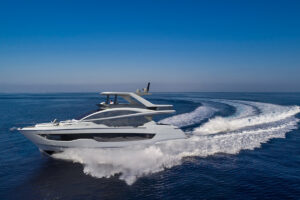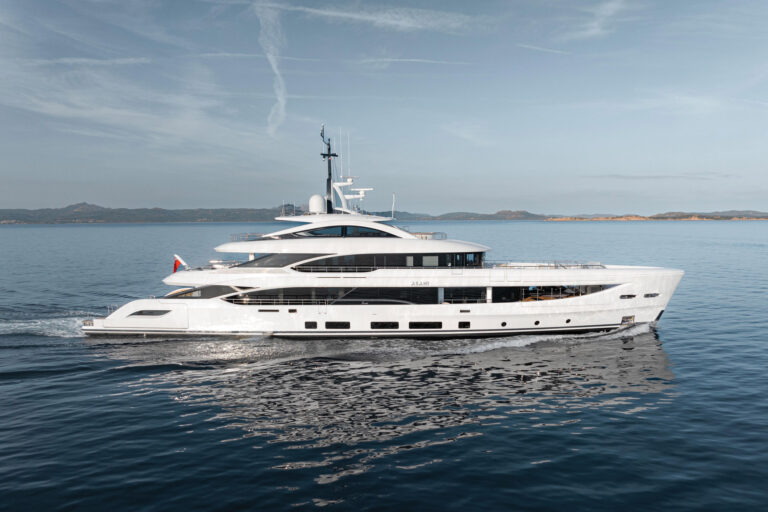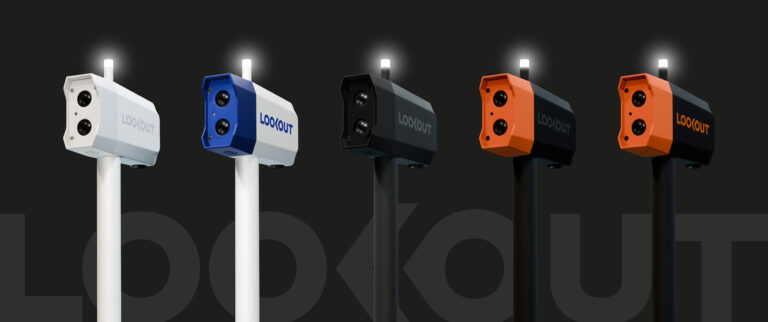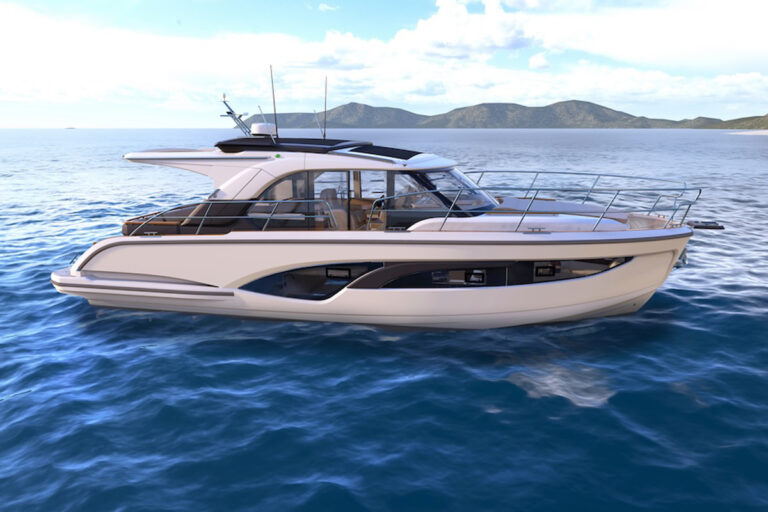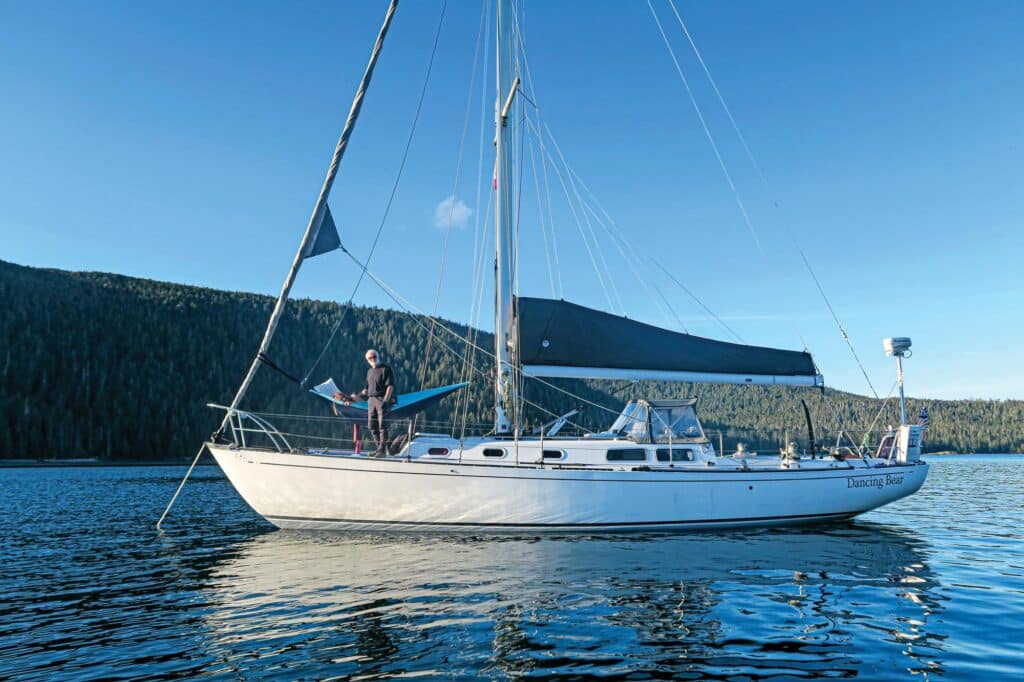
You never forget your best day of sailing. Mine came in the waning miles of the 2005 Transpac Race from Los Angeles to Honolulu, screeching down the Molokai Channel under spinnaker toward Diamond Head in 30 knots of pumping trade-wind breeze, hanging onto the tiller for dear, lovely life while surfing at 14 knots aboard a Cal 40 called Dancing Bear. The sun was searing, the wind was howling, and the deep, blue Pacific Ocean was all the more striking set against the stunning backdrop of the green volcanic islands.
This remembrance, however, is not about me. Instead, it honors the legendary Cal 40, a William Lapworth design originally launched in Southern California in 1963 that has provided scores of fellow offshore sailors with rides they’ll always hold dear. Though I do recall my first thoughts to a fellow shipmate soon after crossing the finish line: “God, I love a boat that’s better than I am.”
All this came back to me last summer, when I joined Dancing Bear’s owner and skipper, accomplished Pacific Northwest sailor Mark Schrader, for a cruise northward from Anacortes, Washington, and up the coast of Vancouver Island. It’s a far different venue and excursion than the Transpac, but one that made me appreciate the Cal 40 in a new light. This is one versatile vessel.
From the outset, the Cal 40 was considered a radical, ultra-light design, displacing just 15,000 pounds with 6,000 pounds of ballast and a flat, canoe-shaped hull that was ideal for prolonged downwind surfs. What really separated it from other boats of its era—hulls with long overhangs and deep, full keels from prominent East Coast yacht designers like Sparkman & Stephens—was the fin keel and detached spade rudder, greatly reducing the boat’s wetted surface. A similar appendage was employed in the winning America’s Cup 12-Metre Intrepid, but that was four years later.
Read Next: An Ocean Sailor Tries Freshwater Racing
The Cal 40’s production run lasted eight years and produced 108 boats, which are still highly sought-after. There’s no question that the boat has reached cult status and that it remains highly competitive. Indeed, the overall winner of the 108-boat fleet in the 2022 Newport Bermuda Race and the recipient of the coveted St. David’s Lighthouse Trophy was Sally and Stan Honey’s Cal 40, Illusion.
Yes, the Honeys are world-class sailors—Stan is a renowned professional offshore racer and navigator, and Sally is a two-time Rolex Yachtswoman of the Year—and they recruited an all-star crew after Illusion had undergone a full refit. Still, Illusion was almost 60 years old. The Honeys purchased the boat in 1988 and spent the ensuing decades racing and cruising it. They decided to campaign it one final time in 2022. Their victorious attempt, covering the 635-nautical-mile voyage in 87 hours, included a textbook crossing of the Gulf Stream and a top-speed burst of 22 knots, both of which were winning highlights.
My own trip last summer on Dancing Bear was a decidedly more mellow affair, but we also scored our own personal highlights. For me, one of those was taking the helm on a cold, funky overnight passage from the coast of British Columbia across the Hecate Strait to the archipelago known as Haida Gwaii, formerly the Queen Charlotte Islands. The sensation of driving a solid craft offshore, nestled deep in the cockpit on a tiller-steered boat, is rare and wonderful. In the wind and waves, everything balanced and in harmony, I fell in love with the Cal 40 all over again.




